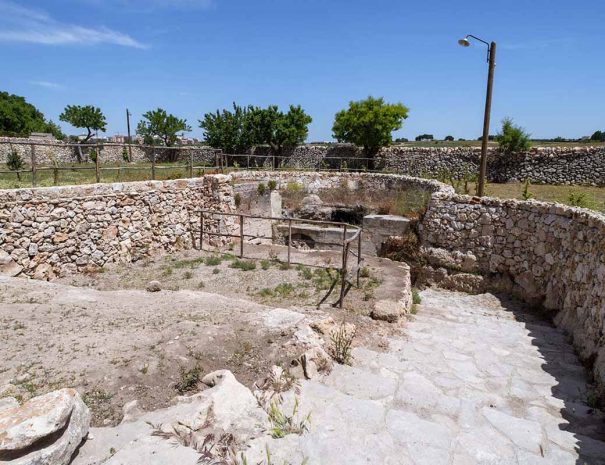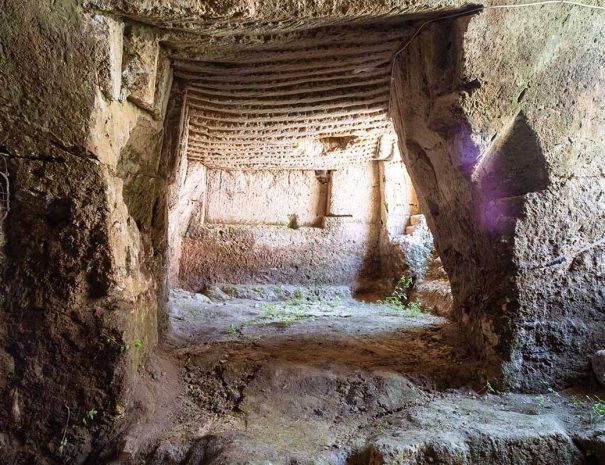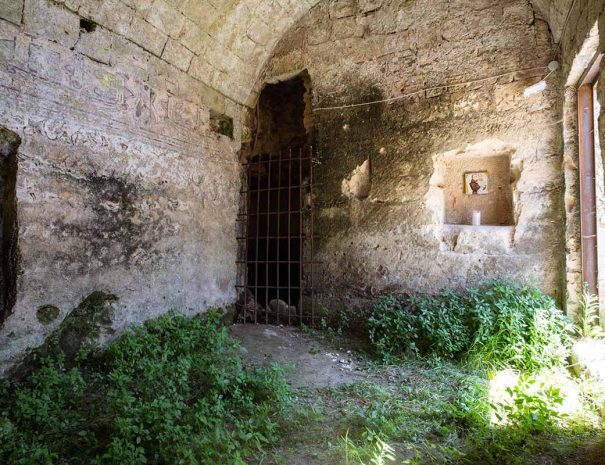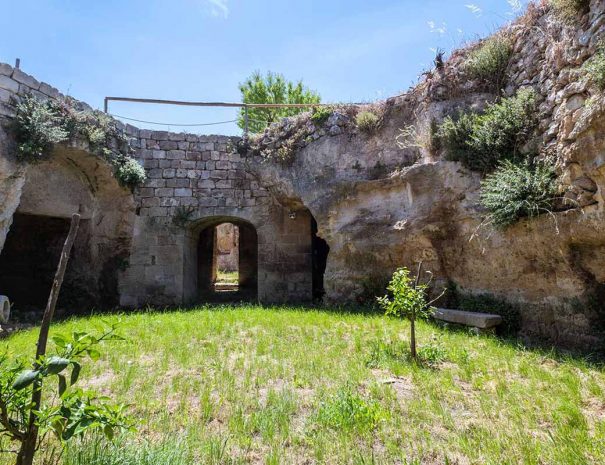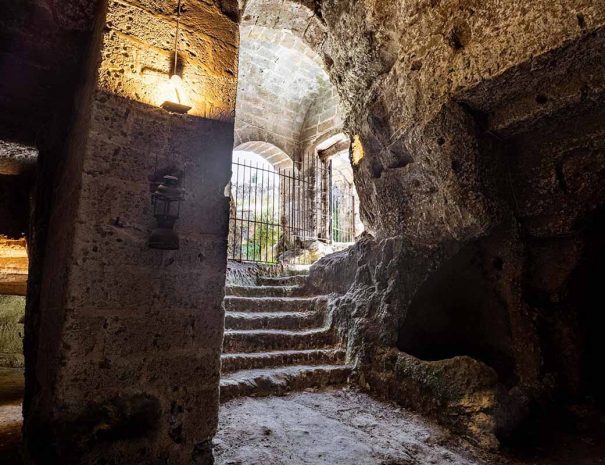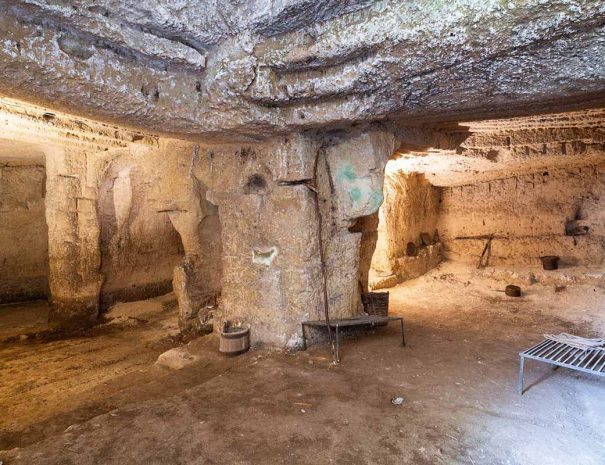Caves and Hypogea
A MAZE OF TOMBS AND CAVITIES
Caves and Hypogea
ARCHAEOLOGICAL DIGS AND NECROPOLIS
The property is located on the outskirts of Altamura in an area of agricultural and artisan interest, the Lama Buccerii, in the San Tommaso district. Lama in italian means “blade” and refers to a piece of land characterized by a moderate thickness of topsoil which makes it useful for horticultural and cereal crops as well as for the planting of fruit, olive, almond trees and vineyards for the production of the local wine, the Primitivo.
The topsoil lies on a thick layer of white limestone that has been exploited through stone mining since at least the Greek era. At the current state of knowledge, it can be assumed a depth of not less than 15 m which is the depth the two neviere.
The satellite photographic documentation along with the findings in the vault of the hypogea and with archaeological research, allow us to say that the Rajola Pescarini property is built on a vast necropolis of the 6th-4th century B C. The density of the tombs is considerable. The evidence suggests that they are divided into two areas, in relation to an ancient road axis, as occurs in the nearby necropolis of Iesce. The visit to the hypogea of Dimora Cagnazzi allows us to see these tombs from below and in section, as they were intercepted during the excavation of the cavities. Some of the tombs on the ground were used as skylights, tank mouths and access routes during the excavation of the caves and quarries.
Lama Buccerii-San Tommaso site’s cultural relevance is not only related to the rural building, which was used by Luca de Samuele Cagnazzi and his family as a solitary and peaceful place of study and as cabinet of wonders, but also to the important necropolis mentioned above, to the hypogeal cavities, perhaps pertinent to a bucceria (butcher shop) of the Angevin age, to the maze of quarries for stone extraction, to a workshop of clay and grains, and, finally, to a trullo, used as a control tower overlooking the dried up stretch of water recently known as lake Baldassarre. At short distance from San Tommaso there are other underground complexes such as Pontrelli, Le Torri, Fornello, Carpentino, Pisciulo and Iesce.

